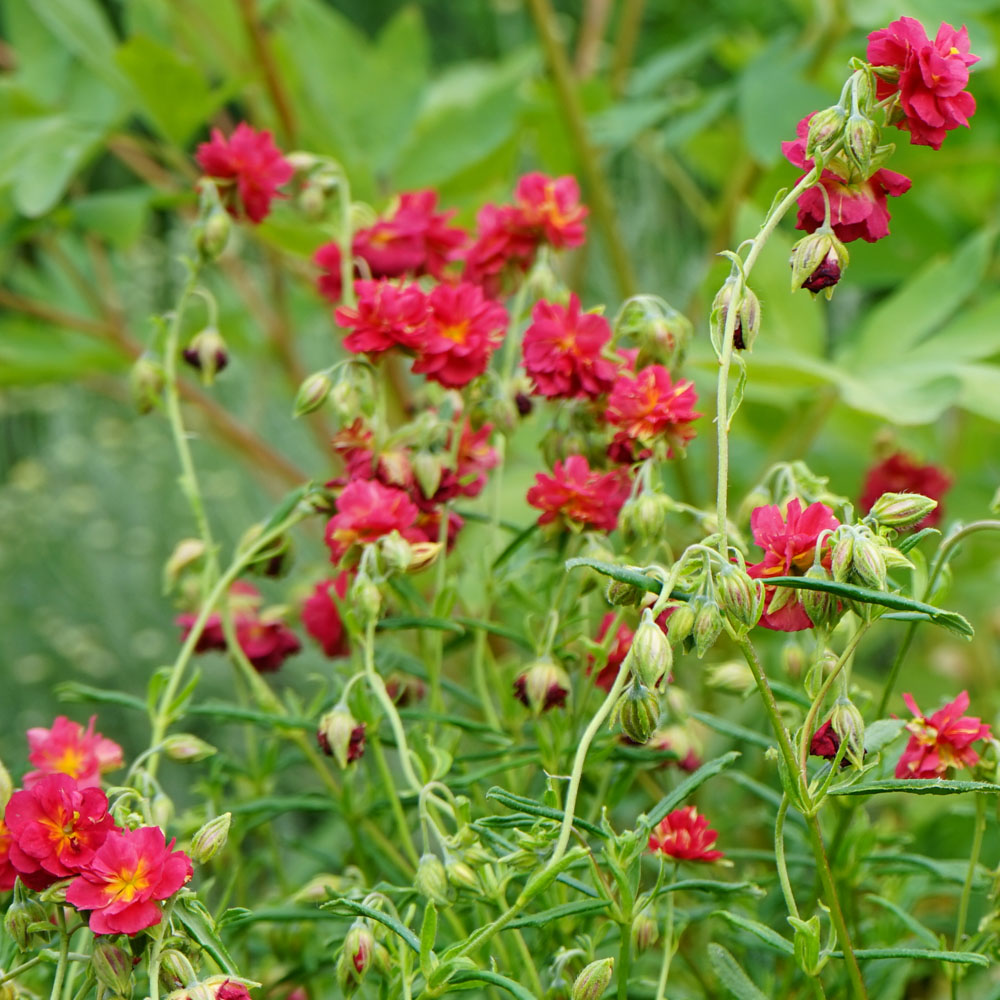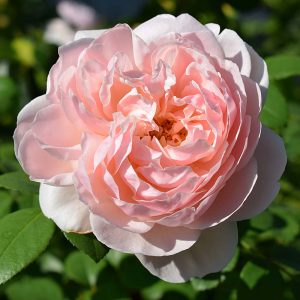Description
Helianthemum, commonly known as rock rose, is a genus of low-growing, evergreen shrubs that are native to Europe and the Mediterranean region. They are prized for their profusion of small, cup-shaped flowers that bloom in a variety of colours, including white, yellow, pink, and red. Helianthemum are hardy, low-maintenance plants that are easy to grow in well-draining soil and full sun. They are often used as groundcovers or in rock gardens, and can provide a beautiful and natural look to any garden. To create a harmonious planting scheme, consider pairing Helianthemum with some complementary companion plants. For example, the blue flowers of Campanula (bellflower) can provide a beautiful contrast to the bright blooms of the rock rose. The soft pink flowers of Armeria maritima (thrift) also pair well with Helianthemum and can create a natural and peaceful look in the garden.
Key Facts
- Common Name(s):Rock Rose ‘Cerise Queen’
- Hardiness:Fully hardy through most of the UK
- How big will I get? Helianthemum ‘Cerise Queen’ can grow to a height of 0.3m and a spread of 0.3m.
- Did You Know That:The small, delicate flowers of Helianthemum are short-lived, typically blooming for only a day. However, the plants are so prolific in their blooming that the flowers are constantly being replaced throughout the growing season?
Plant Calendar
A rough guide to how this plant will change through the year.
| Jan | Feb | Mar | Apr | May | June | July | Aug | Sept | Oct | Nov | Dec | |
| Flowering Time |  |
 |
 |
 |
||||||||
| Foliage Colour |   |
  |
  |
  |
  |
  |
  |
  |
  |
  |
  |
  |
| J | F | M | A | M | J | J | A | S | O | N | D |
 |
 |
 |
 |
||||||||
  |
  |
  |
  |
  |
  |
  |
  |
  |
  |
  |
  |
Care Guide

Soil Requirements
Helianthemum ‘Cerise Queen’ prefers soil with good drainage and does not tolerate standing water. This plant is not tolerant of acidic soil, it requires either a neutral or alkaline soil to grow.

Best Position
Helianthemum ‘Cerise Queen’ can handle either an exposed or a sheltered position and requires full sun to thrive, this consists of more than six hours of direct sunshine per day.

Maintenance
Helianthemum ‘Cerise Queen’ flowers on last year’s growth so it should be pruned immediately after it has finished flowering. Cut back flowered stems to around 2.5cm to encourage fresh growth, this will also keep the plant nice and compact and avoid widespread woody growth.

Pest, Diseases and Wildlife
Helianthemum ‘Cerise Queen’ is generally pest free, and it tends not to have problems with diseases. It is toxic to.





